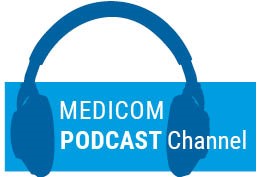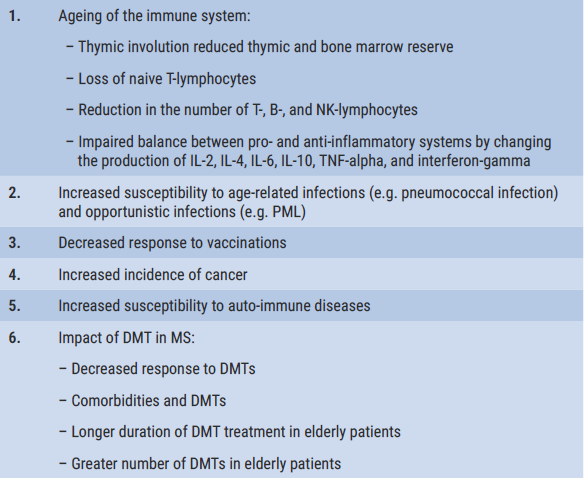 Magnetic resonance imaging (MRI) and clinical characteristics could differentiate between aquaporin-4 antibody positive neuromyelitis optica spectrum disorder (AQP4-NMOSD), relapsing-remitting multiple sclerosis (RR-MS), and non-acute myelin oligodendrocyte glycoprotein antibody-associated disease (MOGAD). A low number of brain lesions, low disability scores, and the absence of myelitis extending over 3 or more vertebral segments (longitudinally extensive transverse myelitis) was typical for MOGAD, rather than AQP4-NMOSD and RR-MS. Medicom spoke with Rosa Cortese, MD, clinical research associate at University College London, Great Britain, who presented the findings of the multicentre MAGNIMS study on October 15, 2021 at the virtual European Committee for Treatment and Research In Multiple Sclerosis Virtual Congress (ECTRIMS 2021, the Digital Experience)[1].
Magnetic resonance imaging (MRI) and clinical characteristics could differentiate between aquaporin-4 antibody positive neuromyelitis optica spectrum disorder (AQP4-NMOSD), relapsing-remitting multiple sclerosis (RR-MS), and non-acute myelin oligodendrocyte glycoprotein antibody-associated disease (MOGAD). A low number of brain lesions, low disability scores, and the absence of myelitis extending over 3 or more vertebral segments (longitudinally extensive transverse myelitis) was typical for MOGAD, rather than AQP4-NMOSD and RR-MS. Medicom spoke with Rosa Cortese, MD, clinical research associate at University College London, Great Britain, who presented the findings of the multicentre MAGNIMS study on October 15, 2021 at the virtual European Committee for Treatment and Research In Multiple Sclerosis Virtual Congress (ECTRIMS 2021, the Digital Experience)[1].MOGAD, AQP4-NMOSD, and RR-MS have overlapping phenotypes. Distinguishing between these conditions is important, since the pathologies have different pathogenetic profiles and require different therapeutic options. Currently, cell-based assays are used to detect MOG antibodies. However, this technique lacks diagnostic accuracy during attack-free periods of the disease, and for low-positive, and borderline negative samples. Therefore, the European Magenetic Imaging in MS (MAGNIMS) collaboration aimed to identify MRI markers and clinical features to differentiate between the 3 conditions. In total, 665 scans of patients with confirmed MOGAD (n=162), AQP4 NMODS (n=162), or RR-MS (n=189), and healthy controls (n=152) were included for analysis. The data was extracted from 16 centres (13 MAGNIMS centres).
The absence of Dawson’s fingers, temporal lobe lesions, and longitudinally extensive transverse myelitis, in combination with a young age (<34 years) and an expanded disability status scale (EDSS) score <3 was discriminative for MOGAD (accuracy: 0.76, sensitivity: 81%, specificity: 84%, P<0.001). The presence of fewer than 6 brain lesions and the phenotype at onset was the best set of features to differentiate between MOGAD (<6 lesions) and RR-MS, with a sensitivity of 82%, and a specificity of 83% (P<0.001). The absence of Dawson’s fingers and temporal lobe lesions could differentiate between AQP4-NMOSD (absence) and RRMS (sensitivity: 89%, specificity: 62%, P<0.001), whereas an EDDS score <3 plus the absence of LETM were able to distinguish between MOGAD (absence) and AQP4-NMOSD (sensitivity: 89%, specificity 62%).
Medicom’s correspondent talked to Dr Cortese about the value of these results:
Medicom: Could you explain the rationale of the study?
The MAGNIMS multicentre study aimed to look at MRI and clinical biomarkers to distinguish between multiple sclerosis and the two antibody-mediated diseases AQP4-NMOSD and MOG associated antibody disease. We know that these diseases share clinical features and MRI findings. It is important to differentiate between the three diseases, because treatment strategies are completely different. Moreover, it has been demonstrated that MS drugs may worsen disease activity in AQP4-NMOSD patients. Also, it has been reported that MS drugs are ineffective for MOG antibody-associated disease. We needed to investigate a large cohort of patients, since MOGAD and AQP4-NMOSD are rare disorders. In this study, we performed an MRI analysis looking at the number, the volume, and the distribution of brain lesions. We examined features that have demonstrated to be able to differentiate MS from AQP4-NMOSD and MOGAD, such as Dawson's finger lesions, U-fibre lesions, lesions located in the temporal lobes, and longitudinally extensive transverse myelitis in the spinal cord. The results showed that certain imaging markers can differentiate between the three diseases. For example, the MRI measures that predicted MOGAD instead of the other two diseases where the absence of Dawson's finger, temporal lobe lesions, and long transverse myelitis. Interestingly, when we added clinical measures, such as low disability (EDSS score less than 3), and young age at the time of MRI (younger than 34 years) to our model, the sensitivity increased, reaching an average accuracy of 76%.
Medicom: We know that early evaluation of treatment response and prediction of disease evolution are key issues in MS. How has your work contributed to that?
We know that MOGAD can be differentiated from the other two diseases by the detection of the antibody in the serum, using cell-based assay technique. However, it has been demonstrated recently that up to a quarter of positive results may be false positives when the test is performed in the real-life clinical setting. Our study suggests that MRI and clinical information may guide the selection of patients that qualify for cell-based assay. This pre-selection may avoid testing in low probability situations, in which the risk of false-positives or false-negatives increases. This is very important in clinical practice.
Another point of interest is that MOG antibody titres can fluctuate over time; many patients may turn negative in the non-acute phase of the disease. Therefore, I think that our study results are especially helpful for clinicians during the chronic phase of the disease. Since some signs and symptoms, typical of MOGAD, may disappear during this phase, our model can provide some indication on who to test via cell-based assay.
Medicom: Where to go from here with these results?
The next step is to develop a diagnostic algorithm to guide clinicians in the selection of patients to test for MOG antibody disease, using MRI and clinical information. We need to integrate our results with other clinical and MRI features that are useful in distinguishing between the three diseases. For example, additional clinical features could be the presence of oligoclonal bands, or recovery from relapse treatment. For MRI measures, we need to include other segments of the central nervous system that can be affected in the three diseases. We know that the thoracic and lower spinal cord segments are mostly involved in MOGAD. However, in our analysis we have not included these segments, because we performed a retrospective study. Therefore, we had to consider the scans we had. In the future it would be useful to add these segments as well as the optic nerve into the analysis. Another important step is to validate these results in patients who are at disease-onset. These are the patients who need to be categorised for cell-based assay testing. In order to develop diagnostic criteria, we therefore must know whether our results are valid in patients at disease-onset.
- Cortese R, et al. MRI and clinical features differentiate non-acute MOGAD from AQP4-NMOSD and RRMS: a MAGNIMS multicenter study. OP180, ECTRIMS 2021 Virtual Congress, 13-15 October
Posted on
Previous Article
« ECTRIMS 2021 Highlights Podcast Next Article
Study supports role of the immune system in depression »
« ECTRIMS 2021 Highlights Podcast Next Article
Study supports role of the immune system in depression »
Related Articles
November 18, 2024
Gut microbiota modulate inflammation and cortical damage

September 28, 2020
MS Virtual 2020 Highlights Podcast

September 7, 2023
Immunosenescence and MS: relevance to immunopathogenesis and treatment
© 2024 Medicom Medical Publishers. All rights reserved. Terms and Conditions | Privacy Policy
HEAD OFFICE
Laarderhoogtweg 25
1101 EB Amsterdam
The Netherlands
T: +31 85 4012 560
E: publishers@medicom-publishers.com

